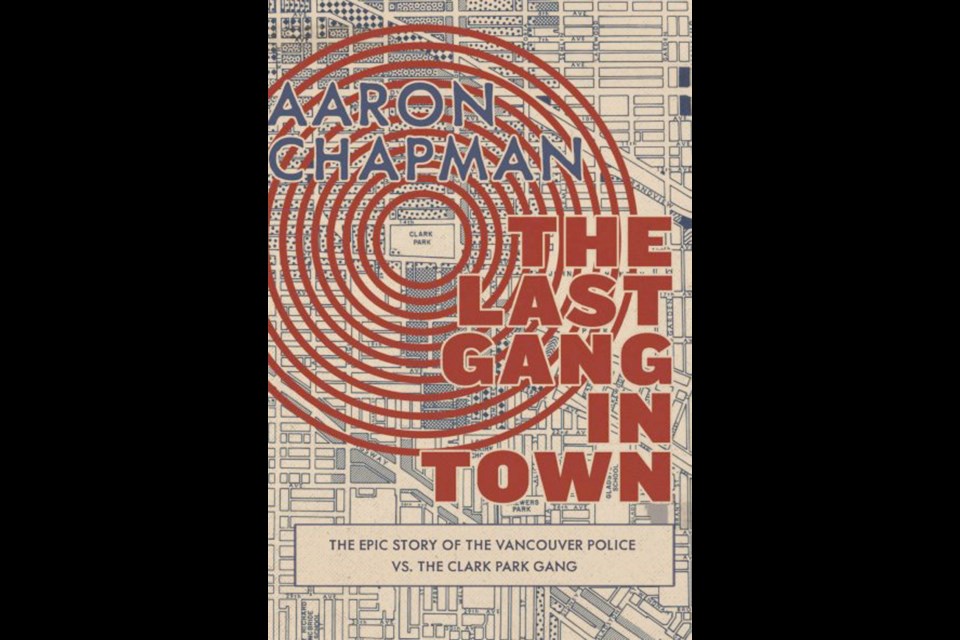Blood, Sweat, and Fear: The Story of Inspector Vance, Vancouver’s First Forensic Investigator
By Eve Lazarus
Arsenal Pulp Press, 218 pp., $21.95
The Last Gang in Town: The Epic Story of the Vancouver Police vs. the Clark Park Gang
By Aaron Chapman
Arsenal Pulp Press, 206 pp., $24.95
There is always interest in a good crime story — and here are two from just across the Strait of Georgia, although yes, there are strong Island connections to be had here.
They come from two different points of view: The cops and the criminals, or the good guys and the bad guys.
Blood, Sweat, and Fear is not the first book Eve Lazarus has written about crime in the Lower Mainland; her Cold Case Vancouver was one of the top-selling books in the province last year.
This time, she looks at the work of one person — John Fleming Collen Brown Vance, who was born in Scotland and was brought to Canada as a six-year-old so his father could work in the coal mines at Wellington, near Nanaimo.
Vance was trained as a chemist and worked for mining companies before accepting a job as Vancouver’s city analyst in 1907. He used his skills in science to test food supplies, water quality and the like, but over time he was asked with increasing frequency to help the police crack cases.
In 1932, he was made an honorary inspector and was put in charge of the police department's science branch. He remained with the police until his retirement in 1949.
Had he been born a few decades later, his work would have qualified him for a spot on the Forensic Files television series. Instead, he will be remembered through this book.
Over the years Vance was involved in many high-profile criminal cases throughout the province, and was called to help solve crimes in Greater Victoria.
One of the local cases involved the deaths in 1937 of Doris Gravlin and her estranged husband Victor, a former sports reporter at the Daily Colonist. Doris was assaulted and killed at the Victoria Golf Club, and Victor’s body was found just off Gonzales Point about a month later.
Vance’s investigation helped the coroner’s jury decide that Victor had killed himself after killing his wife. It’s a case that is hard to forget, thanks to reports from time to time that the ghost of Doris can still be seen on the links or crossing the road.
Vance was also involved in the investigation into the death of Sidney Colebourne, who was found in bed in his Oak Bay home in 1938, a bullet hole in his forehead.
In another case, in 1933, Vance found evidence that Stewart Ashley, a 19-year-old from Vancouver, had killed himself in Vic West by taking cyanide.
This book examines a dozen of Vance’s cases, and gives the reader background information on how crimes can be solved, and also a sense of the times. That is valuable context in what is, in effect, a social history.
Vance became a minor celebrity during his career, and his work was featured in newspapers and magazines. In time, however, it became clear that the publicity was putting his life in danger, because some bad people saw good reason to have him silenced.
Blood, Sweat, and Fear will ensure that his work does not stay forgotten.
The Last Gang in Town offers a close look at the Clark Park Gang, a street gang from the east side of Vancouver in the 1970s.
The gang was involved in several high-profile clashes with police, including one outside the Rolling Stones concert in 1972. The death of a gang member in a police shooting helped bring an end to the Clark Park Gang.
Author Aaron Chapman has done extensive research into the gang members and the efforts of the police to stop their illegal activities. He drew from police documents and newspaper accounts, and most important of all, he interviewed former gang members and police officers.
The result is a remarkable story, one that probes the edges of Vancouver’s underworld as lived by young men with trouble on their minds. Their exploits seem tame compared to the gang violence on the Lower Mainland today, but at the time, the Clark Park Gang members were juvenile delinquents to be feared.
Some of the gang members went on to respectable lives, but the Clark Park experience has stayed with them.
These two books deal with stories that have seen little interest since the stories were on front pages of newspapers. Without the efforts of Eve Lazarus and Aaron Chapman, this history might have been forgotten — and that would have been a shame.
The reviewer is editor-in-chief of the Times Colonist.

-thumb.png;w=120;h=80;mode=crop)

